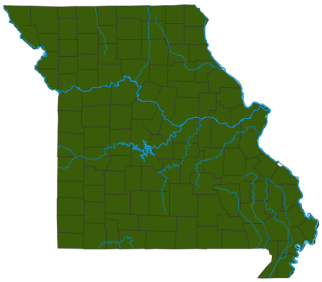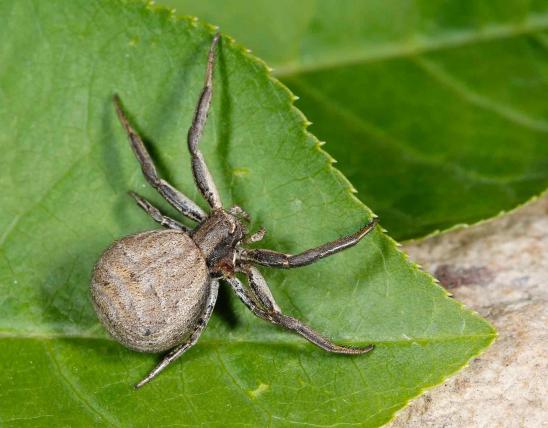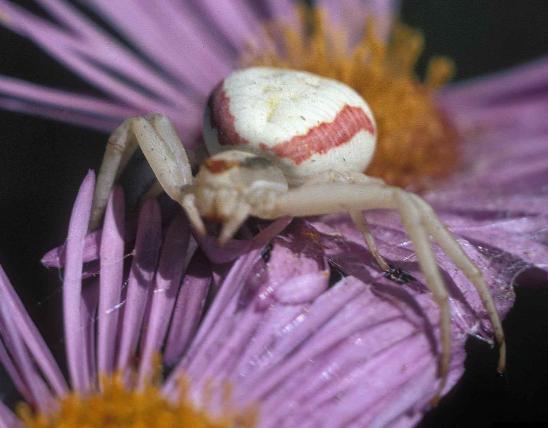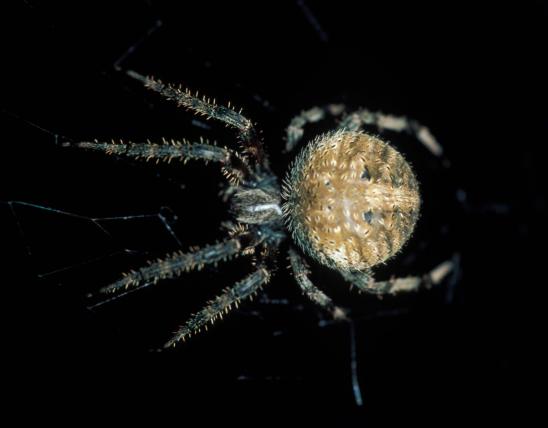
All crab spiders generally resemble crabs: Their legs extend outward from the sides, and they can walk in any direction. Most live in flowers and capture prey simply by grabbing and biting it.
The whitebanded crab spider is small and whitish yellow or yellowish brown. Often its carapace is slightly greenish, with a broad whitish-yellow midband bordered by darker, thinner sides of yellowish brown. Its eye region may be marked with red, and its legs are uniformly cream colored. An unmarked abdomen is not unusual, but more typically it is marked with a brownish-yellow V, converging toward the carapace and made up of various spots or stripes.
Like a chameleon, this spider often changes color to blend with its surroundings. Thousands of tiny crab spiderlings lie concealed in spring and summer flowers, waiting to capture insects with their powerful forelegs.
This species is sometimes called the ridge-faced flower spider because of a small white or yellowish ridge on the spider’s tiny “face,” below its eight eyes. Because this ridge is often white, the other common name is "whitebanded."
Length (not including legs): Females about ¼ to nearly ½ inch; males are less than ⅛ inch.

Statewide.
Habitat and Conservation
You are most likely to notice these spiders after they have matured, in early autumn fields and pastures among plants such as daisy fleabanes, asters, thistles, milkweeds, and goldenrods. They are also commonly found along roadsides and in gardens, on flowers like snapdragons, Queen Anne's lace, and marigolds.
Food
Insects such as bees and flies, plus other spiders (especially other crab spiders) make up a large portion of the diet. Crab spiders don't build webs to net their prey; instead, they wait quietly on flowers and ambush insects — simply grabbing and biting them — as they come for nectar and pollen. Sometimes you can find crab spiders by looking for bees and butterflies that are dangling oddly from flowers, as the crab spider is eating them.
Life Cycle
As a general rule, spiders in our area hatch from eggs in spring and spend the growing season eating, maturing, mating, and laying eggs. Females continue creating egg cases as long as the weather holds out. As temperatures cool in fall, their metabolism slows, and they generally die when it freezes. Egg cases overwinter, and spiderlings hatch in spring.
Human Connections
Humans tend to think of pollinators as "good," so it is natural to view their predators as "bad." However, the pressure that predators impose on their prey causes those species, over many generations, to possess quick reflexes, a strong capacity for flight, and good vision of their own.
Ecosystem Connections
Predators, including these small spiders, control the numbers of the species they prey on, helping to maintaining the balance of nature. Spiders, including their eggs and young, provide food for other predators, including other spiders.





































